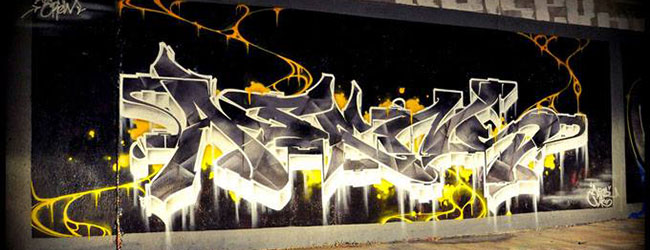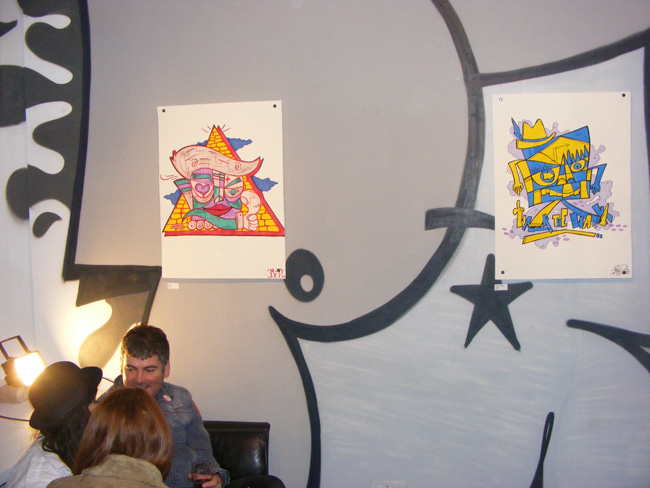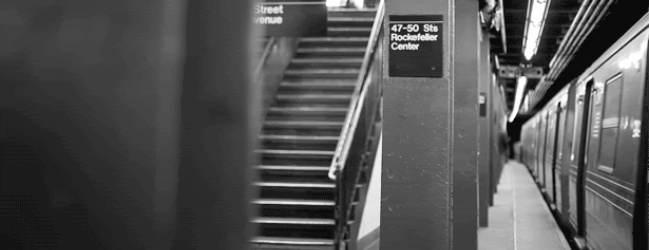3 hours solid is the time I spent yesterday at the Business Design centre where the London Art fair is being held until Sunday 23rd January and still I ran out of time to get to see or do what I had intended too. This is to show how much there is to see at this amazing event. Continue reading London Art fair – in its 23rd year but still going strong, part1
Athleticizm by Goldie at Underdog
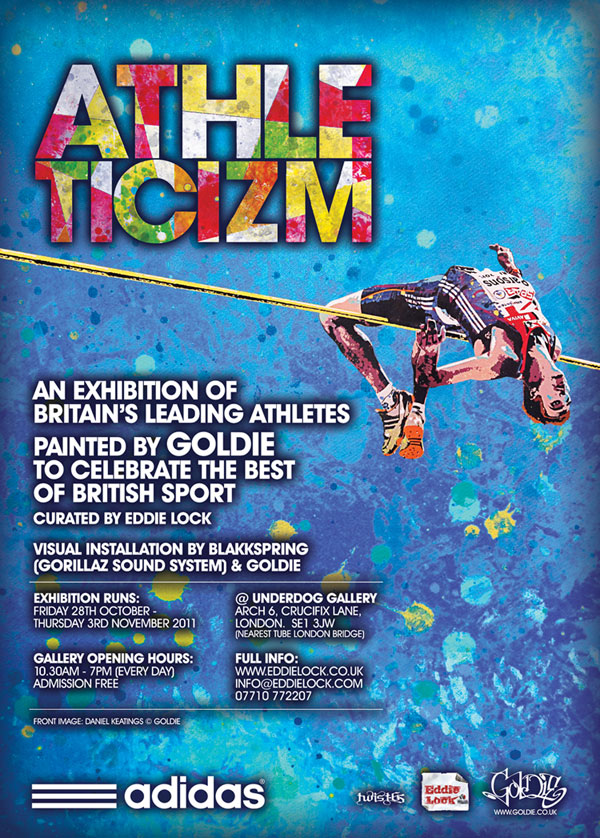
Rookie, Agens and Phlegm street art
Part of our 3 street art works series you should see today: Rookie, Agens and Phlegm
Rookie – located in Soest (Germany)
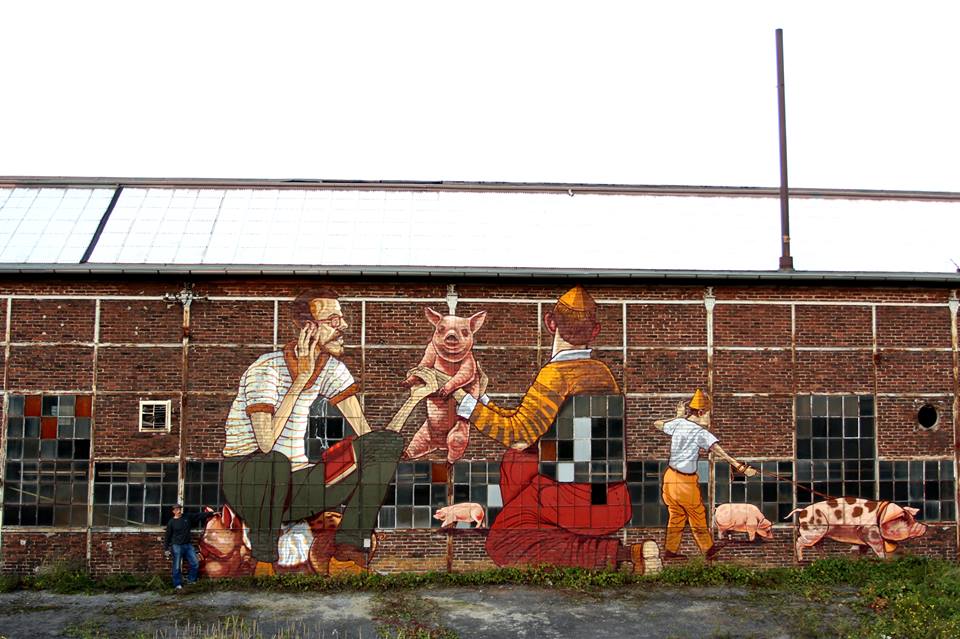
Agens
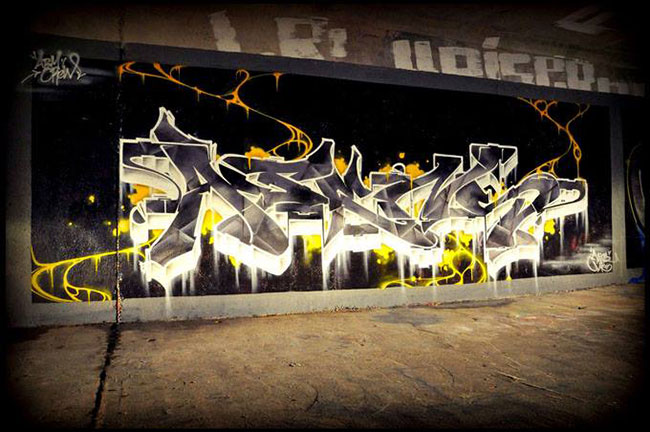
Phlegm – located in Antwerp (Belgium)
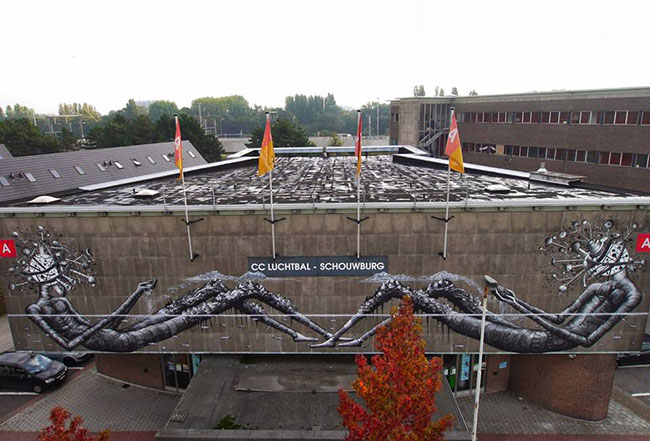
Cissy Cook at Smithfield gallery: chill out

I had only gone once to the Smithfield gallery a while back ago to see DEUS – works from the UVA (United Visual Artists) and was happily pleased with it although I did not know what to make of it before seeing it. I headed down in the same state of mind last week end to check out their current exhibition – Cissy Cook – new work.
The only thing I know was that Cissy’s work is all about papercuts that mainly picture butterflies. Not the kind of things I am too keen on I first thought but getting to see things you know little of should be the attitude and I am glad I went that day. Continue reading Cissy Cook at Smithfield gallery: chill out
When Da Mental Vaporz crew hit Melbourne
I must admit when I heard that this crew, originally from France, were heading down under I completely geeked out.
We have been big fans of DMV, seeing pieces from them go up in Paris, Barcelona and their epic wall at London’s Meeting Of Styles.
Even though the show at Rtist gallery is a great way to see each artists individual style, the true abilities of this crew shine when they collaborate on big walls.
It seems that everything came together for them here in Melbourne, the weather was great and the wall they were given was in China Town a unique and oddly appropriate setting.
Find below a few pics of the wall they painted.
> I want to see more photographs
> I want to see Da Mental Vaporz at the Meeting Of Styles London photos
Photographs by chasinghosts
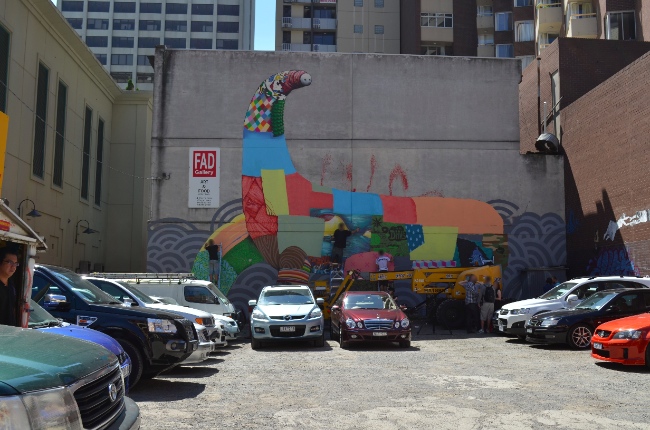
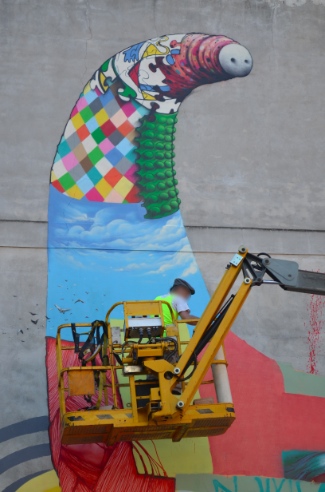
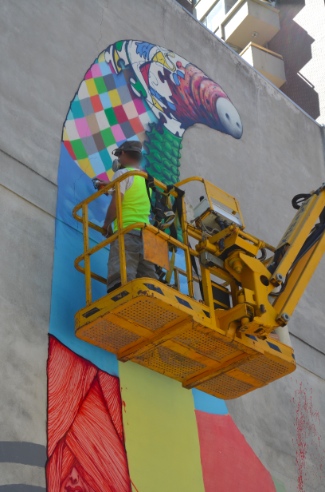
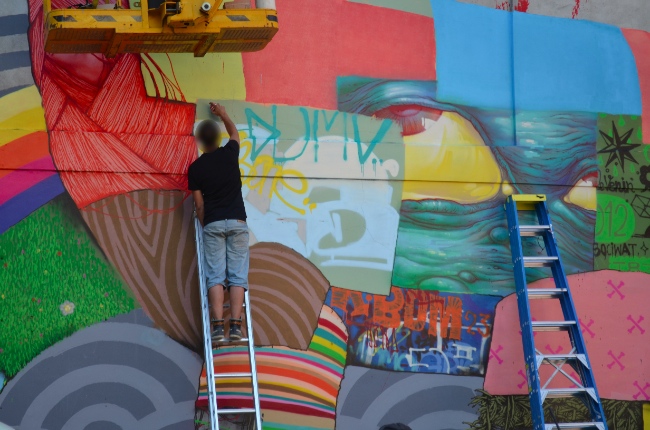
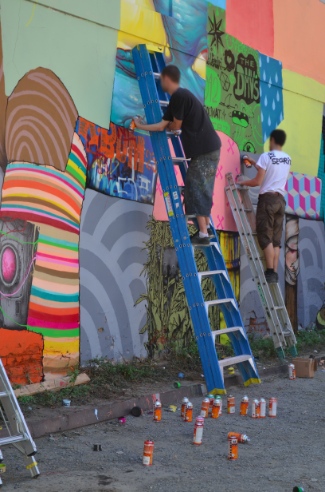
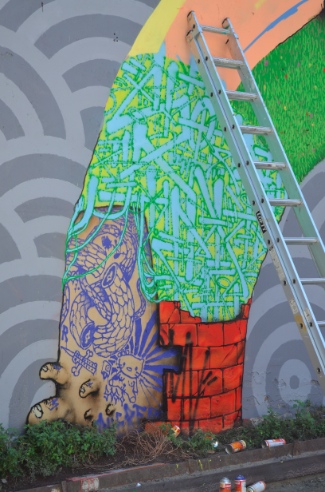
Adam Neate, dimensional painting at Elms

Once again I was on my way to the Elms Lesters Painting rooms to go and check out the latest dimensional paintings from Adam Neate. I still had so many good memories from Adam Neate’s last year’s show, also held at this venue, that I could not wait to see what this new show had to offer.
The layout and feel of the Elms Lesters painting rooms is as I remembered it – high ceilings, wooden floors and a relative darkness only interrupted by spots of lights giving the artist’s pieces all the shine and attention they deserve. But Adam Neate’s works would not even need all that for the visitor to quickly realise that what they are looking at is something quite special, something you also need to look at for a little moment to get what it actually is.
Acrylic, perspex, metal and aerosol on board : there you have what makes up Adam Neate’s works. But these mediums need some solid imagination as well as some advanced manual dexterity to transform and assemble some elaborate and intricate pieces of dimensional art – Adam Neate has just done that.
The palette used is flamboyant with a preference for red, the shapes are rounded, the end result is astonishing. Adam Neate’s art is very evocative, his job is to put shapes and colors together, your job is to see through these and come back out with a vision of the piece, your own vision of what you are actually looking at. I found his series of “Red Dimnesional Portraits” very powerful, I could almost hear them shouting at me as I walk past them. The flamboyant colors and defaced visages have certainly something to do with it.

This review will not be complete without mentioning his “Canvas Crucifix”. The Elms Lesters Painting rooms have been accommodated to give even more emphasis to this amazing piece of art. A wall was especially made so the piece could be hang on and with a clever setting of light and shadow, isolate the piece from everything else and draw people’s attention. I found myself very intrigued, slightly apprehensive and thinking “What the hell is that? Adam Neate torn the whole canvas, while still attached the frame, in a such way that he managed to produce what looks like a character on a crucifix. No painting here just a very original use of the canvas as such – a dimensional approach again.
The show at Elms Lesters Painting Rooms is now over. You will find more pictures of the show by scrolling down.
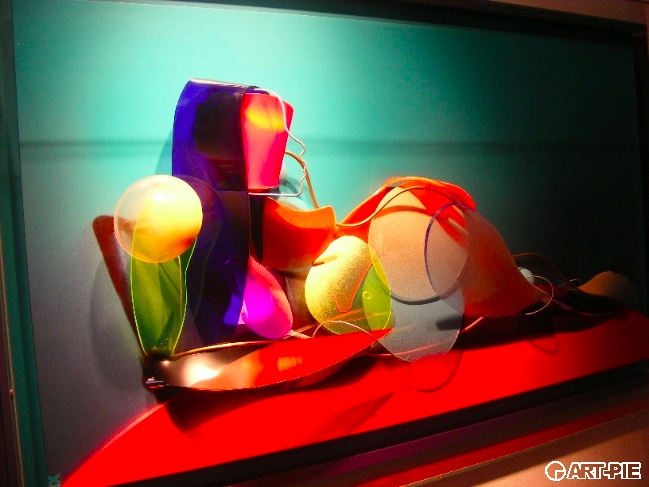
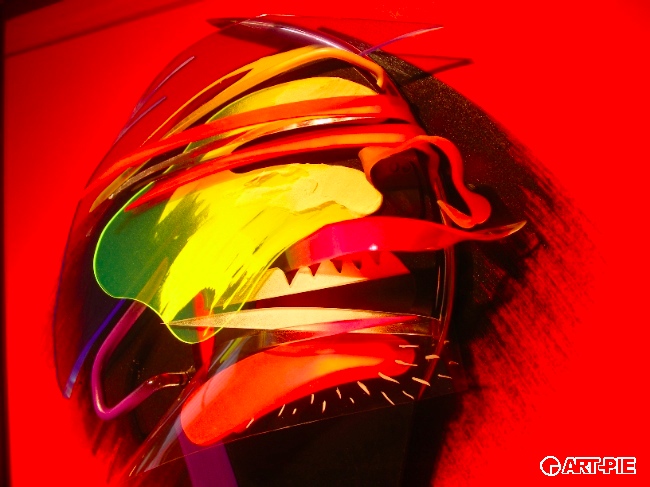
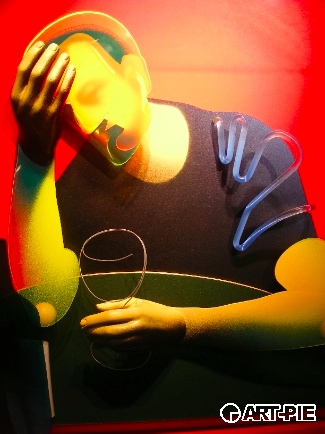
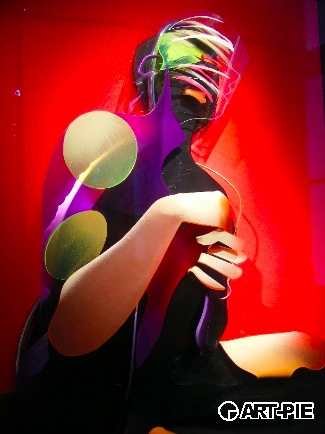
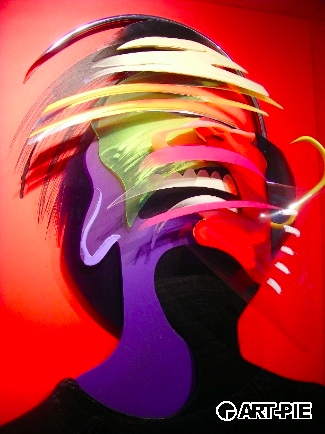
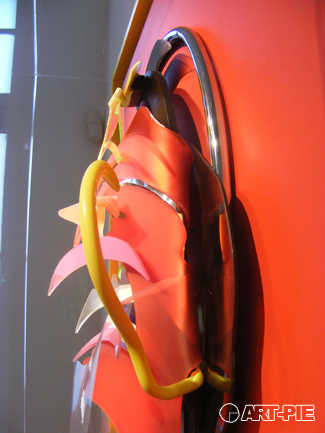
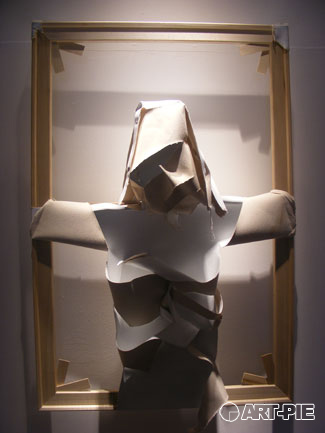
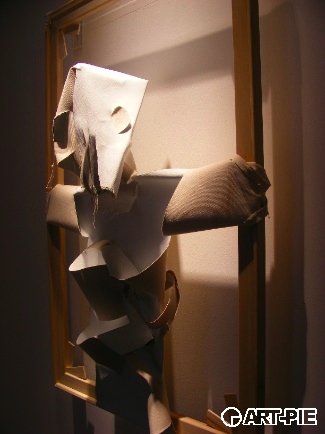
Meet Eddie Breen: piggyback art

About 10 years ago, Chris Sammartano (Eddie Breen is his ‘brush name’) stumbled upon a “horrible” painting at a flea market. He bought it for a dollar, picked up some art supplies, and got to work transforming the staid church scene into his own vibrant vision.
An hour or so later, he had created “Piggyback Art,” an exuberantly surreal style that reimagines found works with layers of text, color, and offbeat graphic elements. Continue reading Meet Eddie Breen: piggyback art
Panik at Pure Evil
Panik is a renowned graffiti artist in London and beyond. Member of the ATG (Ahead of The Game) crew, you probably came across his work across Camden or Kentish Town. his mark can been seen also in the streets of Barcelona or Prague.
However the sight of Panik running across rooftops with ladders and spray paints might belong to the past. Continue reading Panik at Pure Evil
10 cinemagraphs that will amaze you
You may have seen those before or you may have not. but cinemagraphs, as they are called, are hot right now in the design world, blogs and social media platforms.
We published before about this new type of media which are still photographs in which a minor and repeated movement occurs. Cinemagraphs, which are usually published in an animated GIF format, can give the illusion that the viewer is watching a video.
They are commonly produced by taking a series of photographs or a video recording, and, using image editing software, compositing the photographs or the video frames into a seamless loop of sequential frames.
We browsed the web and put together a collection of 10 awesome cinemagraphs that will amaze you hopefully.
One of the more common cinemagraphs, the pouring visual or liquid flow are high effective. For example, the pouring wine example below show that there is no imprint left on the glass or change in level from the bottle, the only movement comes from the constant flow of wine.
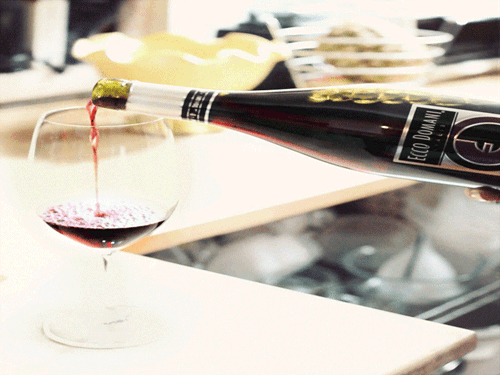
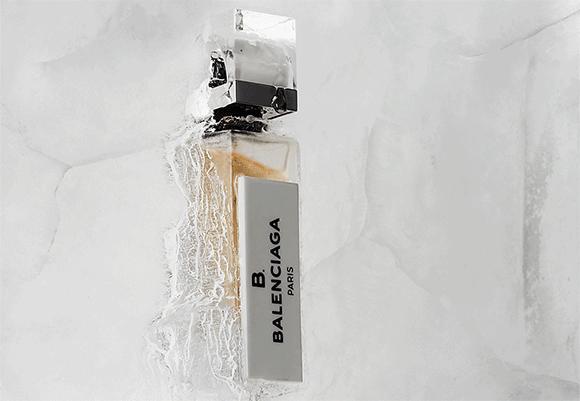
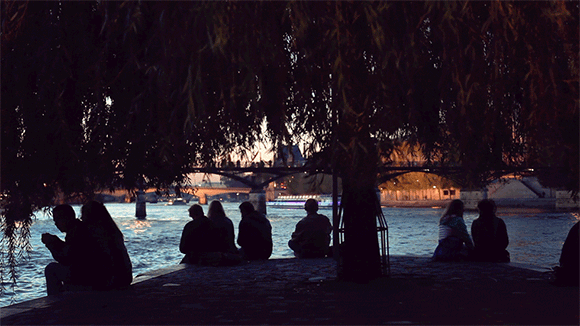
Another effect used in cinemagraphy is the movement of objects as the first example below shows. You can see the a train from the New York underground Subway network. Without anybody being captured in the entire scene, the train pulls into the station and departs instantly.
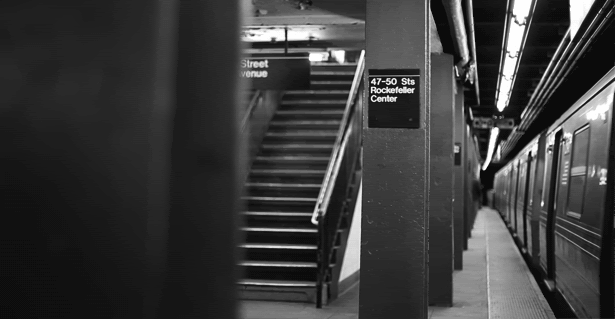
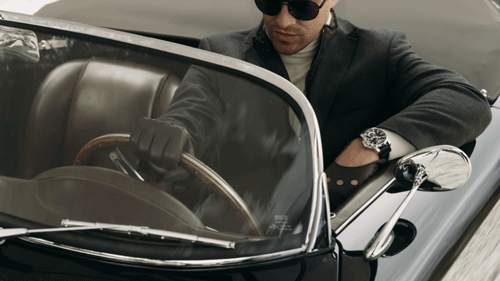
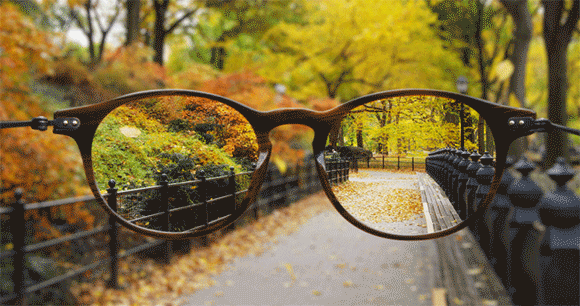
The term “cinemagraph” was coined by U.S. photographers Kevin Burg and Jamie Beck, who used the technique to animate their fashion and news photographs beginning in early 2011. The technique of those images existed before, it was e.g. already used for the advertisement of the game Mirror’s Edge back in 2008.
Another common effect in cinemagraphy is applied to humans or animals and can give the viewer a quirky, chilling ot event sometime quite scary output. I’ll let you be the judge of the examples below

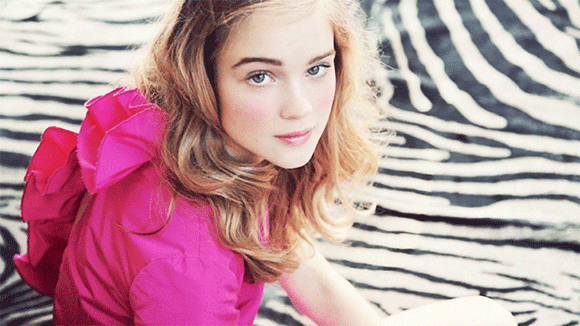
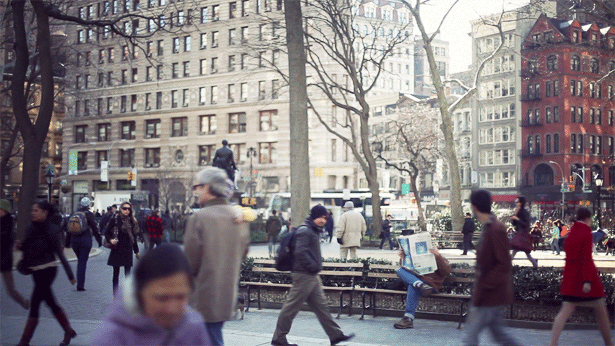
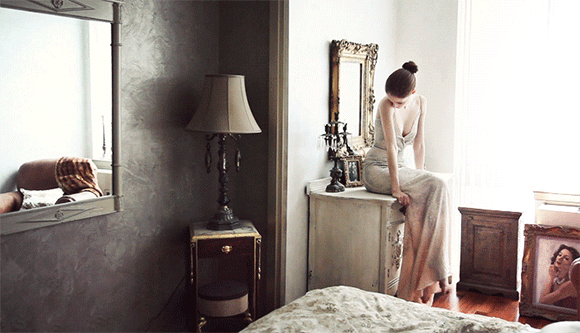
LEGO’s new wii remote: play and build remote

LEGO’s ‘play and build remote for Nintendo wii’, what an amazing thing. I was about 3 years old when I got my first LEGO set and in my teens when I first played game consoles and now I can unify the two – sweet. Continue reading LEGO’s new wii remote: play and build remote


